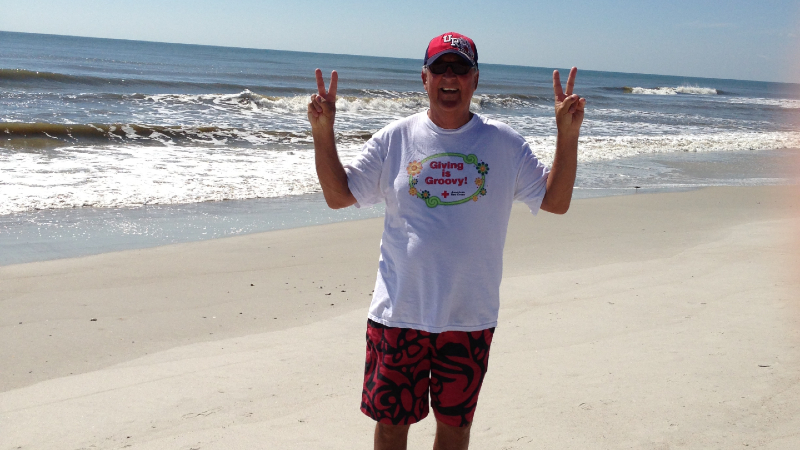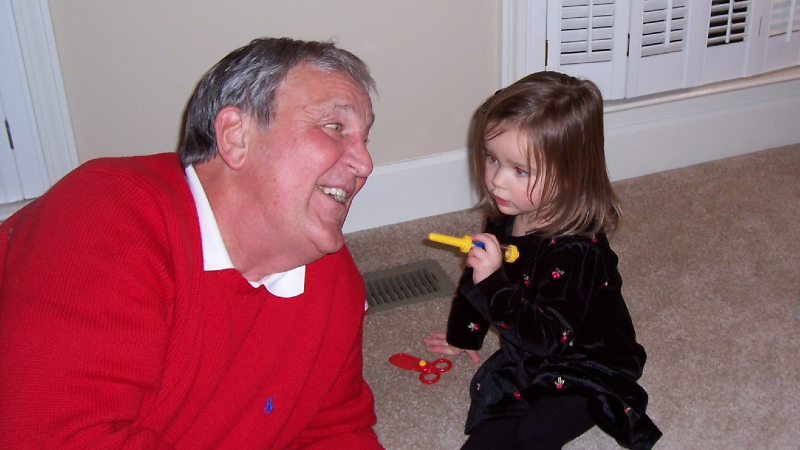Legacy Stories
Jim Crenshaw
Jim Crenshaw grew up playing football in Mississippi and went on to star as a tailback for the University of Richmond. Crenshaw was a man of faith who loved his family and could strike up a conversation with any stranger. By the late 90’s, Jim’s wife Pam Crenshaw noticed changes in Jim’s executive functioning, memory, and sleep. They went from doctor to doctor searching for treatments but Jim’s symptoms only worsened. In 2014, a neurologist suggested that Crenshaw may be suffering from Chronic Traumatic Encephalopathy (CTE). After his death in January 2019, Pam donated his brain to the VA-BU-CLF Brain Bank. Researchers there confirmed Jim suffered from Stage 3 (of 4) CTE. Pam is now sharing Jim’s story to show how CTE robbed the world of a great father, husband, and grandfather.

By Pam Crenshaw
Jim Crenshaw grew up in Weir, Mississippi where Friday night lights were the weekly highlight for the entire town. He began playing football in middle school, continuing for 10 years and suffering multiple untreated concussions. He received a scholarship to play for Mississippi State where he played for one season, but when Jim’s coach moved to University of Richmond, Jim followed. There, Jim was co-captain of the football team, played in the 1968 Tangerine Bowl, and holds the record for most punt returns in a game. His primary position throughout football was running back.
I met Jim in 1991. We were friends for a couple years before we became a couple. He was charismatic, funny, and so very handsome. What attracted me most was his strong faith. He believed completely in God’s faithfulness and grace which was what got all of us through this long journey.
Jim never met a stranger and could strike up a conversation with a tree. That is probably why he enjoyed such a successful career in medical sales. I knew he was disorganized and that he often forgot things but I thought that was “just Jim” and it did not at that time interfere with his success or relationships.

We married in 1996 and began what I thought would continue to be a life filled with travel, laughs, and new memories. We both loved football so autumn weekends were our favorite and bowl season was a traveling frenzy. Within a couple years I saw Jim’s struggles more closely—how he had to work so hard to remember appointments, to get places on time, and the extra time he put in his work to get it all done. I noticed erratic sleep patterns and some nights of almost no sleep at all.
We talked about his sleep issues and decided they had to be due to stress. Jim agreed to see a psychologist who diagnosed him with ADHD and his family physician prescribed an anti-depressant for anxiety. This helped but it was certainly not a cure. It thankfully allowed Jim to manage his symptoms. Sleep came more easily, but he still never slept more than five hours per night. He lived by sticky notes and his calendar.
The years moved on and Jim’s personality changed slowly. His methods of compensating were no longer working so his symptoms became more obvious. He was more emotional and frustrated. There was more memory loss. The man who could talk to a tree now struggled to carry on a comprehensible conversation. I was so frustrated at this point because I had no clue what was happening to my husband. In hindsight, I didn’t know how good it would have been if Jim’s symptoms plateaued there. But it got worse.
Jim forgot bills had to be paid but continued making purchases and nearly drained our finances. His financial mismanagement was the biggest red flag of all. At his best, Jim was the most frugal man on Earth! He lost important papers. He got traffic tickets. He got lost in the most familiar places. He would sneak out at night. He hoarded everything from toilet paper to newspapers to water. He was not being productive at work, so he was asked to take early retirement, which was very kind of his employer. They could have let him go with no compensation.
Jim saw a neurologist, internist, cardiologist and family physician. In a twist of irony, the internist referred us to the psychologist that had seen him 15 years earlier. No one could give us a diagnosis. The neurologist offered early Alzheimer’s Disease which I immediately rebuked. This just did not look like the typical Alzheimer’s symptoms. But the neurologist had no other guess.
From there, life became a blur. Jim took a nosedive into the deeper symptoms of CTE and by 2013 I truly thought I was going crazy. We had sold our home in Atlanta and moved to Florida to be near our daughter who is a nurse. I needed a support system. Our new primary care physician there recommended a neurologist in the area and we had our first appointment with him in July 2014. He spent five minutes with Jim and said, “It is CTE.” I said, “What is CTE?” He proceeded to tell me. At that point it did not matter that he said there was no cure. I finally had a promising suspected diagnosis we could confirm after death. There was a reason my husband was having these problems. He was not choosing to be a different person. He did not want to be like this. He did not want to make my life difficult. He was the same person I married except now, his brain was so sick it was affecting every other part of him.

Jim passed away on January 18, 2019 at age 71. His brain was sent to the VA-BU-CLF Brain Bank. Researchers there confirmed our suspicions. Jim was diagnosed with Stage 3 (of 4) CTE.
From 2014 until Jim’s death, I watched that sweet, fun, lover of mine stop talking, walking, and eating. I watched him turn into something no one should ever have to become. CTE took so many good years of his life and the lives of our family. It took away a fun grandfather of 13 and stole years of unmade memories. It took his dignity. It took his arms, legs, and organs. But it could not take the legacy Jim Crenshaw leaves behind for his family and friends, and all the people he met along his journey — those “trees” he talked with who probably did not even know his name. Thank you, #42. You are loved and missed!

You May Also Like

Although we cannot yet accurately diagnose CTE in living people, a specialist can help treat the symptoms presenting the most challenges.
CTE Treatments
Those struggling with suspected CTE are not the only ones who need support. View tools and resources for CTE caregivers.
Caregiving for CTE